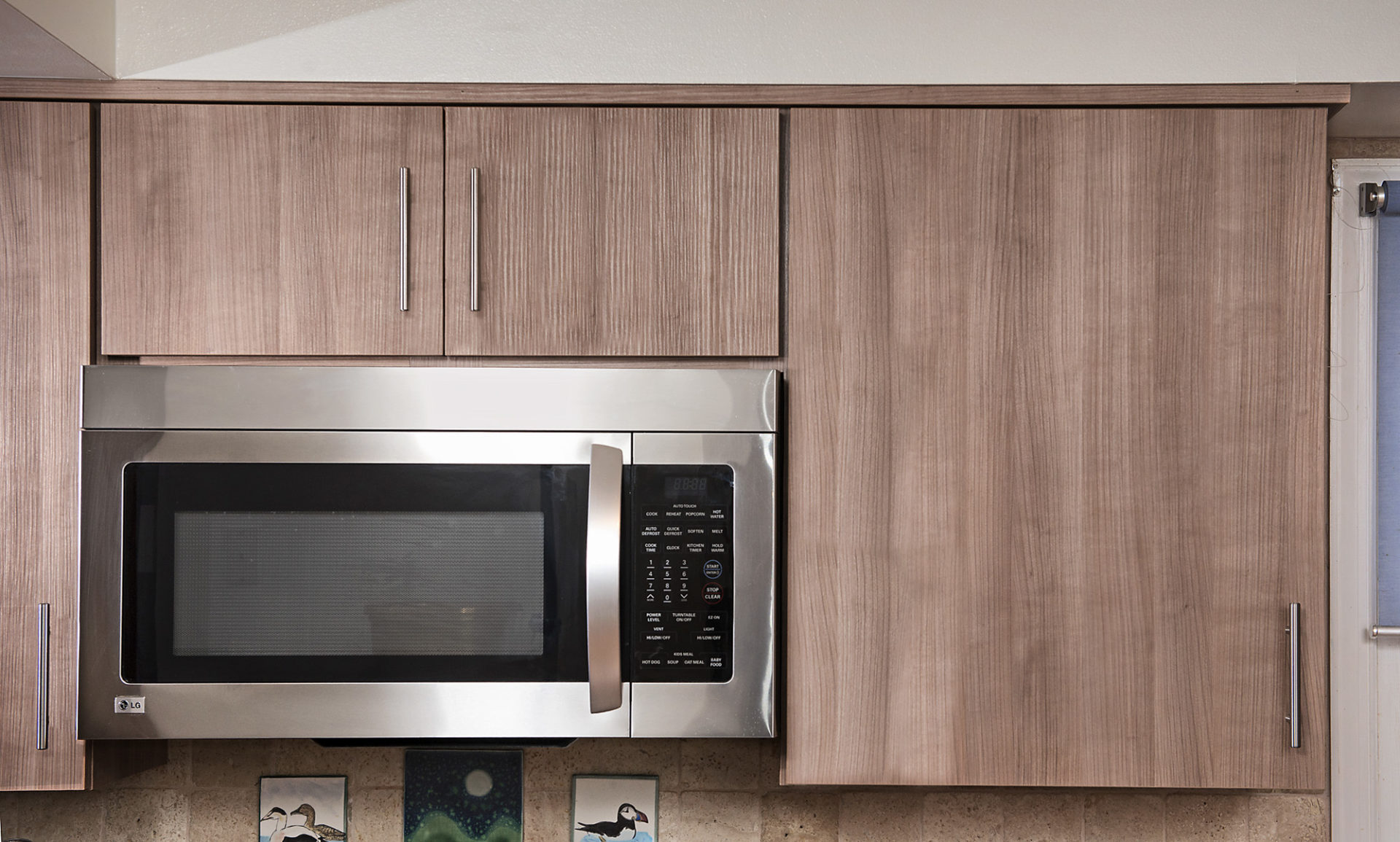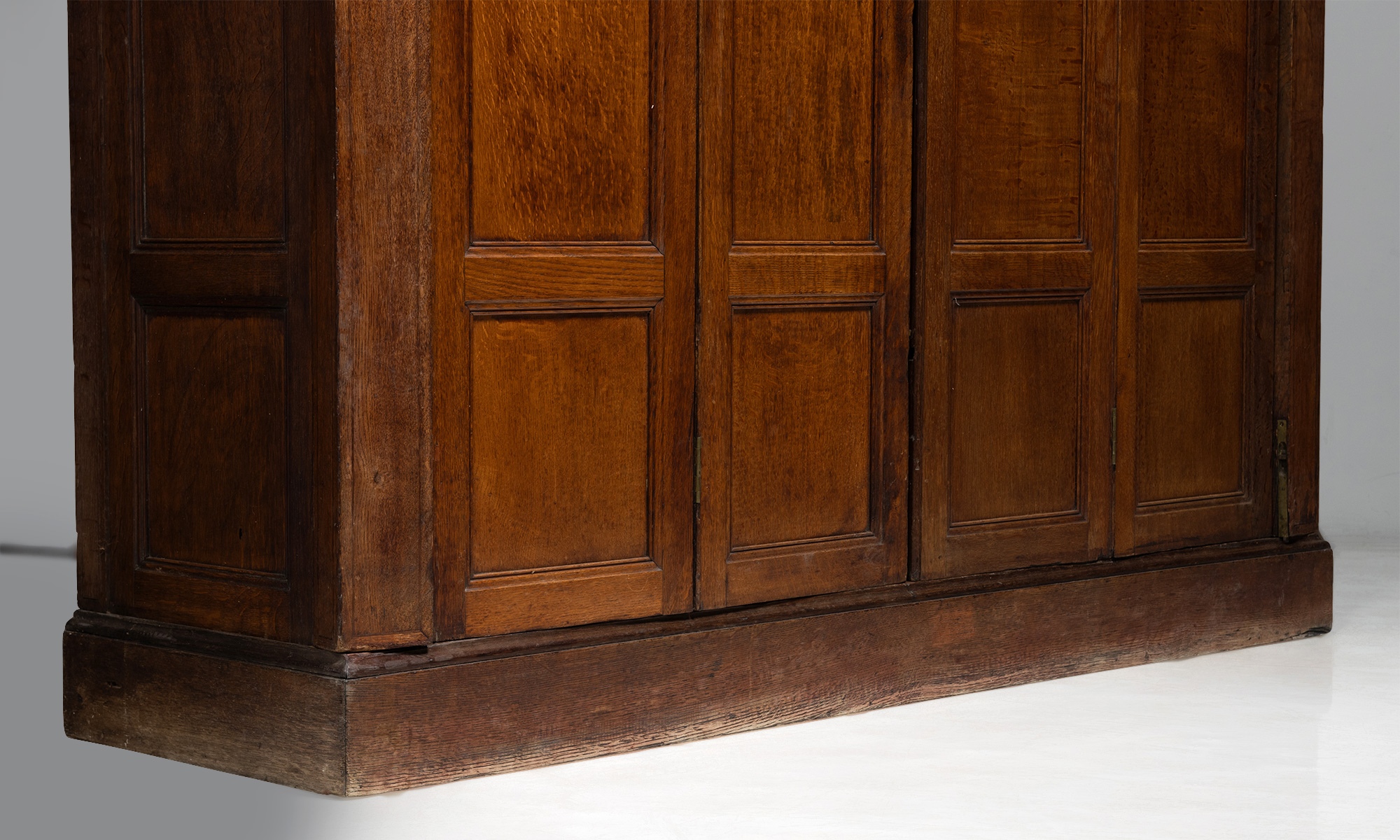Visual Descriptions of Valley Oak Cabinet Doors Closed

Imagine stepping into a rustic Jakarta South kitchen, the kind that whispers stories of family gatherings and weekend brunches. The air is warm, maybe a little spicy from the sambal being prepped on the counter. The heart of this kitchen, though, is the cabinetry – specifically, the closed valley oak doors. They’re not just storage; they’re a statement piece, a visual anchor that grounds the space in natural warmth and understated elegance.
Rustic Kitchen Aesthetic with Closed Valley Oak Cabinet Doors
The closed valley oak cabinet doors contribute significantly to the overall rustic charm of the kitchen. The wood grain is prominent, a rich tapestry of swirling patterns and subtle variations in tone. The color palette ranges from warm honey browns to deeper, almost chocolatey hues, depending on the specific cut and age of the oak. These variations aren’t imperfections; they’re character, adding depth and visual interest to the otherwise simple, rectangular shapes of the doors. The overall aesthetic is one of natural beauty, a sophisticated simplicity that complements both modern and traditional kitchen designs. Knots, if present, add a further touch of rustic charm, telling a silent story of the tree’s life.
Texture and Feel of Closed Valley Oak Cabinet Doors
Running your hand across a closed valley oak cabinet door is an experience in itself. The wood’s texture is smooth yet subtly uneven, a gentle undulation reflecting the natural grain. It’s a tactile experience that speaks of quality and craftsmanship. The slightly rough feel, particularly noticeable along the grain, provides a pleasant contrast to the smoothness of the painted or stained surface. There’s a satisfying weight to the doors, a solid feel that suggests durability and longevity. The cool temperature of the wood, especially noticeable on a hot Jakarta day, provides a sensory comfort, a grounding element in the busy kitchen environment.
Short Story Featuring Closed Valley Oak Cabinet Doors, Valley oak cabinet doors closed
The old wooden cabinet doors, a rich valley oak, stood sentinel in the kitchen. Behind them lay decades of family recipes, handwritten on faded index cards, tucked between chipped porcelain bowls and antique spice jars. Nenek, her hands gnarled but steady, reached for the handle of the central cabinet, its oak darkened by time and use. The doors, closed for years, held secrets, memories, and the comforting scent of her legendary rendang. The quiet click as she opened them was a prelude to a family feast, a testament to generations of shared meals and whispered stories. The closed doors, before opening, held the quiet anticipation, the promise of culinary magic.
Comparative Description: Valley Oak Cabinet Doors Closed vs. Open
Here’s a comparison of the visual impact of valley oak cabinet doors when closed versus open:
| Feature | Closed Doors | Open Doors | Difference |
|---|---|---|---|
| Visual Impact | Clean, uncluttered, emphasizes the wood grain and color | Reveals contents, potentially creating visual busyness or clutter, depending on organization | Shift from minimalist aesthetic to a more detailed, potentially busy display |
| Texture Emphasis | The texture of the wood is the primary visual focus. | The texture of the wood is less prominent; attention shifts to the items within. | Focus shifts from wood texture to the contents of the cabinets. |
| Overall Impression | Sense of calm, order, and understated elegance. | Sense of activity, access, and potentially chaos, depending on the organization of the contents. | Shift from tranquility to dynamism. |
| Light Reflection | Even, subtle reflection of light across the surface of the doors. | Light is diffused and reflected by the contents of the cabinets, creating a varied light pattern. | Light reflection becomes more complex and varied. |
Practical Aspects and Considerations of Valley Oak Cabinet Doors

Choosing the right wood for your kitchen cabinets is a big deal – it’s about style, longevity, and that overall *vibe*. Valley oak, with its rich tones and beautiful grain, definitely brings a sophisticated touch, but let’s dive into the practical side of things. It’s not just about aesthetics; we need to consider how it holds up in the long run.
Advantages and Disadvantages of Valley Oak for Cabinet Doors
Valley oak, like any wood, offers both pros and cons. Understanding these will help you decide if it’s the right choice for your Jakarta South style kitchen.
- Durability: Valley oak is a relatively hard and dense wood, offering good resistance to dents and scratches. This makes it a solid choice for high-traffic areas like kitchens, especially if you have a family that’s, let’s say, *enthusiastic* about cooking.
- Maintenance: While durable, valley oak does require regular maintenance. It’s susceptible to moisture damage, so keeping it dry is crucial. Regular oiling or waxing helps protect against dryness and cracking. Think of it like maintaining a really nice leather handbag – a little TLC goes a long way.
- Cost: Valley oak falls into the mid-range to high-range price bracket for cabinet wood. It’s more expensive than some softer woods like pine, but less costly than exotic hardwoods like mahogany. The price reflects its durability and aesthetic appeal – you’re paying for quality and a unique look.
Caring for and Maintaining Valley Oak Cabinet Doors
Maintaining your valley oak cabinet doors is key to preserving their beauty and extending their lifespan. Here’s a simple, straightforward routine:
- Regular Dusting: A soft cloth or microfiber duster is your best friend. Dust regularly to prevent grime buildup. Think of it as a quick, daily *pampering* session for your cabinets.
- Occasional Cleaning: For deeper cleaning, use a slightly damp (not soaking wet!) cloth with a mild wood cleaner. Always wipe dry immediately. Avoid harsh chemicals or abrasive cleaners, which can damage the wood’s finish.
- Periodic Conditioning: Every few months, apply a high-quality wood oil or wax. This nourishes the wood, prevents drying, and maintains its luster. Follow the product instructions carefully.
Cleaning and Polishing Valley Oak Cabinet Doors
Cleaning and polishing valley oak requires a gentle touch. Avoid harsh scrubbing or abrasive materials. For stubborn stains, a paste of baking soda and water can work wonders – gently rub it in, let it sit for a few minutes, and then wipe clean with a damp cloth. Always test any cleaning solution on a small, inconspicuous area first. Think of it as a trial run before giving your cabinets a full spa day.
Comparison with Other Popular Wood Types
Let’s compare valley oak to some other popular cabinet wood choices:
- Valley Oak vs. Cherry: Valley oak is slightly harder and more resistant to scratches than cherry, but cherry offers a richer, more reddish hue. Cherry also tends to darken with age, while valley oak maintains its color more consistently.
- Valley Oak vs. Maple: Maple is lighter in color and has a tighter grain than valley oak. It’s also very durable but can be more prone to showing scratches. Valley oak offers a more dramatic grain pattern and a warmer tone.
- Valley Oak vs. Pine: Pine is a much softer wood and significantly less expensive than valley oak. It’s easier to work with, but it’s also much more susceptible to dents and scratches. Valley oak offers superior durability and a more luxurious appearance.
Creative and Artistic Interpretations of Closed Valley Oak Cabinet Doors

The seemingly simple act of closing a cabinet door, especially one crafted from the rich, textured wood of a valley oak, opens a world of artistic and metaphorical possibilities. These doors, silent sentinels of domestic life, become canvases for creative expression, symbols ripe with interpretation, and focal points in interior design schemes that speak volumes about personal style.
A Valley Oak Cabinet Door: A Poem
The grain, a map of time’s slow hand,
Across the valley oak, unplanned.
A closed door, secrets it holds within,
Whispers of spices, a gentle din.
Of family gathered, laughter’s bright chime,
Preserved in the wood, arrested by time.
The polished surface, a mirror’s soft gleam,
Reflecting the light, a half-remembered dream.
A silent guardian, steadfast and strong,
Where stories are kept, where memories throng.
A Scene Depicting Closed Valley Oak Cabinet Doors
Imagine a sun-drenched kitchen, minimalist in design yet brimming with warmth. The light, filtering through a large window, washes over a set of valley oak cabinet doors, their rich, honey-brown hues deepening and lightening with the play of shadow and light. The grain of the wood is clearly visible, each line a testament to the tree’s long life. Dust motes dance in the sunbeams, creating a hazy, ethereal atmosphere. The overall color palette is warm and inviting – creamy whites on the walls, hints of terracotta in the tiles, and the deep brown of the oak providing a grounding presence. The mood is one of quiet contentment, a sense of calm and stability that emanates from the very heart of the wood. The shadows cast by the doors are not harsh, but soft and suggestive, hinting at the depth and complexity hidden within the closed panels.
Illustrations of Valley Oak Cabinet Doors in Various Interior Design Settings
Several illustrations could showcase the versatility of valley oak cabinet doors.
- Illustration 1: Modern Farmhouse. Clean lines and a minimalist aesthetic are emphasized. The valley oak doors are simple, shaker-style, with unfussy hardware. The surrounding kitchen features white subway tiles, stainless steel appliances, and open shelving, creating a contemporary feel. The oak doors provide a touch of rustic warmth, balancing the clean lines of the modern design.
- Illustration 2: Traditional Victorian. Here, the valley oak doors are intricately carved with ornate detailing, reflecting the rich history of Victorian design. Darker stains enhance the wood’s natural beauty, creating a luxurious and opulent feel. The surrounding space features dark wood floors, plush velvet upholstery, and antique furniture, complementing the richness of the doors.
- Illustration 3: Mid-Century Modern. The doors are sleek and simple, with clean lines and a focus on functionality. A light stain allows the natural beauty of the wood to shine through. The surrounding space is characterized by clean lines, geometric shapes, and a muted color palette, emphasizing simplicity and elegance. The oak doors add a touch of natural warmth to the otherwise cool and modern aesthetic.
Rewritten Article on Valley Oak Cabinet Doors (Original Content)
Valley oak, *Quercus lobata*, is more than just a tree; it’s a symbol of California’s resilience. Its wood, with its distinctive grain and rich tones, translates beautifully into cabinet doors, bringing a touch of the outdoors in. The strength of the wood ensures durability, a testament to the tree’s ability to withstand harsh conditions. The color varies, from light honey hues to deep browns, depending on the age of the tree and the finishing techniques employed. This natural variation makes each door unique, a piece of living history brought indoors. The density of the wood offers a satisfying weight and solidity, adding to the overall sense of quality and permanence. Choosing valley oak for cabinet doors is a statement – a commitment to natural beauty, enduring quality, and a connection to the landscape. Proper care, including regular polishing and the use of appropriate wood cleaning products, will help preserve the beauty of these doors for generations. The slightly porous nature of the wood makes it receptive to various finishes, allowing for customization to match any décor. From a rustic farmhouse to a sleek modern kitchen, valley oak cabinet doors adapt and enhance, their inherent beauty a constant.
